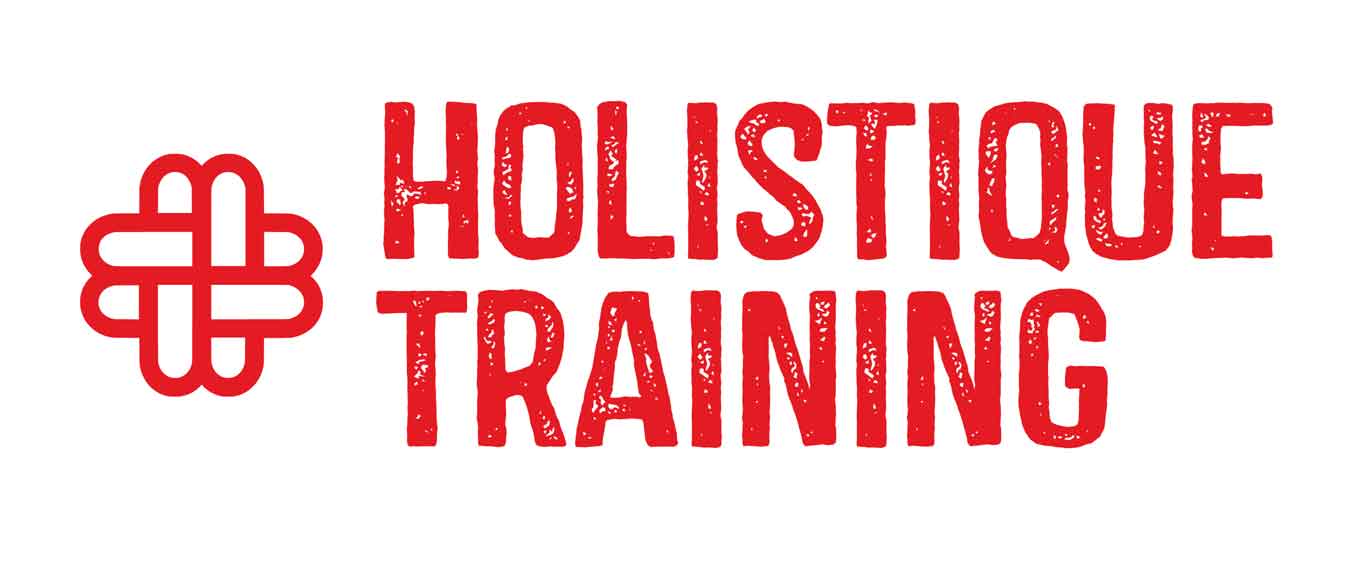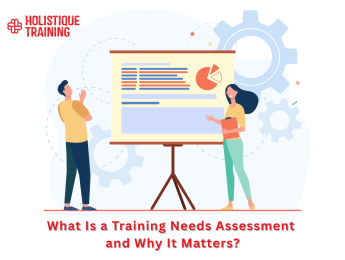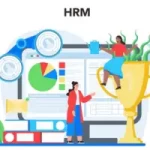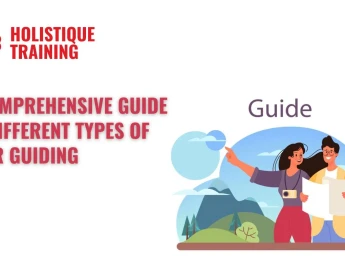- Table of Contents
- Introduction
- 1. What Is a Training Needs Assessment?
- Why Do You Need a TNA?
- TNA as a Guide to Learning & Development (L&D)
- 2. Why Conduct a Training Needs Assessment?
- The Business Case for TNA
- Key Reasons to Conduct a TNA
- Real-World Example
- 3. Types of Training Needs Assessments
- 1. Organizational Analysis
- 2. Task or Role Analysis
- 3. Individual Analysis
- 4. Compliance Analysis
- 5. Performance Analysis
- 4. Steps to Conduct an Effective TNA
- 1. Define the Scope and Objectives
- 2. Conduct Organizational Analysis
- 3. Perform Task Analysis
- 4. Conduct Individual Analysis
- 5. Analyze Compliance and Regulatory Requirements
- 6. Determine Training Priorities
- 7. Select Appropriate Training Methods
- 5. Tools & Methods Used in Training Needs Assessments
- Data Collection Methods
- Analytical Tools
- Digital Tools and Software
- Integrating Methods for Maximum Impact
- 6.How to Conduct a Training Needs Assessment (Step-by-Step Guide)
- Step 1: Define Objectives
- Step 2: Identify the Audience
- Step 3: Choose the Right Data Collection Methods
- Step 4: Analyze the Data
- Step 5: Prioritize Training Needs
- Step 6: Recommend Solutions
- Step 7: Develop an Action Plan
- Step 8: Implement and Communicate
- Step 9: Measure & Evaluate Results
- 7. Common Mistakes to Avoid
- 1. Skipping the Planning Stage
- 2. Relying on Assumptions Instead of Data
- 3. Using One-Size-Fits-All Solutions
- 4. Overlooking Soft Skills
- 5. Not Involving the Right Stakeholders
- 6. Ignoring Follow-Up and Evaluation
- 7. Forgetting About Business Strategy
- 8. Neglecting Future Skills and Trends
- 8. Courses That Strengthen Your Training Needs Assessment Strategy
- Course 1: Employee Training, Development & Empowerment
- Course 2:Expert Training & Development
- Course 3:Strategic Analytics and Effective HR Metrics
- 11. Conclusion
Introduction
Many organizations invest heavily in training programs—yet too often, these efforts fall short, not because the content is weak, but because the real needs were never identified. Training without strategy wastes resources, misses key development gaps, and risks disengaging employees.
That’s where a Training Needs Assessment (TNA) becomes essential. A TNA is more than just a diagnostic tool—it’s a strategic process that aligns learning initiatives with business objectives, uncovers performance gaps, and ensures the right people receive the right training at the right time. Whether you’re dealing with compliance requirements, developing leadership pipelines, or upskilling a digital workforce, an effective TNA turns training from a checkbox into a competitive advantage.
In this article, we will discuss what a Training Needs Assessment is, why it matters, its main types, how to conduct it step-by-step, common pitfalls to avoid, tools to use, and courses that can help you master the process.
1. What Is a Training Needs Assessment?
A Training Needs Assessment (TNA) is a strategic and systematic process used by organizations to identify skills gaps, performance issues, and specific learning requirements within their workforce. The ultimate goal is to ensure that training efforts are focused, efficient, and aligned with both individual development needs and organizational objectives. In simpler terms, it helps an organization figure out what employees need to learn, who needs it, and how to best deliver that learning.
Why Do You Need a TNA?
Training programs are a valuable investment, but to ensure that your organization’s resources are spent wisely, you need to understand exactly what employees need. By conducting a TNA, you gain insights into which skills are lacking, who needs to acquire them, and what training solutions will be most effective. This ensures that training programs are not just random or generic but are tailored to the specific needs of your workforce and the company’s goals. For example, a sales team may need specific training on negotiation skills, while your customer service department could benefit from training on conflict resolution.
At its core, a TNA answers three big questions:
What skills or knowledge are currently lacking?
Training is only effective when it fills a real gap. A TNA helps you identify where employees are struggling or where performance is lacking. Whether it’s technical skills, leadership development, or soft skills like communication, the TNA identifies these gaps so that training programs target what truly matters.
For instance, if your marketing team is struggling to adapt to new SEO techniques, a TNA can help pinpoint this and suggest digital marketing training to upskill them.
Who needs the training?
Not everyone in the organization will need the same training. A TNA allows you to pinpoint which individuals or groups would benefit most from specific programs. This could be department-wide training or something more personalized for high-potential employees or teams facing performance challenges.
For example, your sales team may require training on negotiation skills, while your IT department might benefit from advanced coding workshops.
What type of training will close the gap?
There’s no one-size-fits-all solution when it comes to training. A TNA helps you determine the most suitable training methods, whether it’s in-person workshops, e-learning modules, on-the-job training, coaching, or mentoring. Choosing the right delivery method ensures that employees not only receive the training they need but also engage with it in a way that’s practical and effective for them.
TNA as a Guide to Learning & Development (L&D)
Think of the Training Needs Assessment (TNA) as the compass that guides any Learning and Development (L&D) strategy. Without it, your organization risks investing in training that doesn’t align with actual needs, leading to:
- Wasted resources
- Low employee engagement
- Missed opportunities for growth
By performing a TNA, companies can ensure their training efforts directly support overall performance, engagement, and career development.
Moreover, the insights gathered from a TNA help create long-term training strategies that evolve as the business grows, keeping employees equipped for future challenges. In short, it makes the training process more intentional, strategic, and effective.
2. Why Conduct a Training Needs Assessment?
In an ideal world, organizations would provide training only when it adds real value, boosting performance, productivity, and engagement. In reality, though, many companies launch training initiatives without a clear understanding of what needs to be taught, to whom, and why. That’s where a Training Needs Assessment (TNA) comes in, it brings clarity, focus, and measurable impact.
The Business Case for TNA
According to a 2022 study by Training Industry, Inc., without an accurate understanding of the skills that employees are lacking, training will be highly inefficient and, in many cases, unnecessary in pursuit of building a highly skilled workforce.
The research found that structured assessments lead to more targeted learning, better employee retention, and stronger alignment with business goals.
Likewise, a report from McKinsey & Company notes that every business leader would agree that L&D must align with a company’s overall priorities, yet only 40 percent of companies say that their learning strategy is aligned with business goals.
TNA is the foundation for doing exactly that. Without it, companies risk spending thousands of dollars and countless hours on training that doesn’t move the needle.
Key Reasons to Conduct a TNA
Here are the major reasons why conducting a TNA is not just helpful, but critical:
- Improves ROI of Training Programs
By identifying real gaps, TNA helps organizations avoid the wasteful “one-size-fits-all” approach. Training becomes laser-focused on what truly matters, boosting return on investment. - Aligns Training with Business Objectives
Training should never be detached from strategy. A TNA ensures that learning outcomes directly support current organizational goals, whether it’s scaling, digital transformation, or entering new markets. - Reveals Hidden Performance Issues
Sometimes what seems like a performance problem is actually a skills gap. TNA helps uncover root causes so that interventions are effective. For instance, declining customer satisfaction may stem from a lack of communication training, not motivation. - Enhances Employee Engagement and Development
When employees feel that the training they receive is relevant and valuable, it shows that the organization cares about their growth. This improves morale, engagement, and retention. - Supports Compliance and Risk Management
For regulated industries, like finance or healthcare, a TNA ensures that training programs meet legal and safety requirements, helping organizations stay compliant. - Informs Succession Planning and Talent Development
Identifying skills gaps now means preparing the next generation of leaders and specialists with the capabilities they’ll need tomorrow.
Real-World Example
Let’s say a fast-growing tech startup begins to experience rising project delays. Initially, the leadership assumes it's a time management issue and plans to roll out a general productivity workshop. However, after conducting a TNA, they discover the true issue is a lack of project management skills among mid-level managers. Instead of a generic training, they invest in a certified project management course, and project delivery improves significantly within two months.
This is the power of a well-executed TNA: saving time, money, and effort by identifying theright problem. A well-structured TNA doesn't just benefit individual employees, it fuels organizational development (OD) on a broader scale. By clarifying which competencies are lacking across departments, organizations can design strategic L&D plans that support culture shifts, innovation, and long-term business goals. TNA also promotes a learning culture where development is proactive, not reactive.
Read more on how TNA benefits organizational development.
3. Types of Training Needs Assessments
Conducting a Training Needs Assessment (TNA) is pivotal for organizations aiming to enhance employee performance and align training initiatives with strategic objectives. Various methodologies can be employed to identify and address specific training requirements effectively.
Below are the primary types of TNAs:
1. Organizational Analysis
This approach evaluates the overall performance and objectives of the organization to determine where training is most needed. It involves assessing the company's strategic goals, resources, and external factors that may impact performance. By understanding these elements, organizations can ensure that training programs are aligned with their mission and market demands.
Key Aspects:
- Strategic Alignment: Ensuring training initiatives support organizational goals.
- Resource Allocation: Identifying available resources and potential constraints.
- External Factors: Considering market trends and economic conditions that may influence training needs.
2. Task or Role Analysis
This method focuses on specific jobs within the organization, analyzing the tasks and responsibilities associated with each role. The objective is to identify the skills and knowledge required to perform these tasks effectively and determine if current employees possess them.
Key Aspects:
- Job Breakdown: Detailed examination of duties and responsibilities.
- Skill Identification: Determining the competencies needed for task execution.
- Performance Standards: Establishing benchmarks for successful performance.
3. Individual Analysis
This analysis assesses the performance of individual employees to identify specific training needs. It helps in understanding who requires training and in what particular areas, facilitating personalized development plans.
Key Aspects:
- Performance Evaluation: Reviewing individual work performance against set standards.
- Skill Gaps: Identifying areas where employees lack proficiency.
- Personal Development: Creating tailored training programs to address individual needs.
4. Compliance Analysis
This type of assessment ensures that employees are trained to meet legal and regulatory requirements pertinent to the industry. It's crucial in sectors where compliance is mandatory, such as healthcare, finance, and manufacturing.
Key Aspects:
- Regulatory Standards: Understanding laws and regulations affecting operations.
- Risk Management: Identifying areas where non-compliance could pose risks.
- Mandatory Training: Implementing programs to meet legal obligations.
5. Performance Analysis
This approach identifies discrepancies between expected and actual employee performance. It seeks to uncover whether performance issues are due to lack of skills, knowledge, or other factors, and determines if training is the appropriate solution.
Key Aspects:
- Performance Metrics: Measuring actual performance against expectations.
- Root Cause Analysis: Determining underlying causes of performance gaps.
- Solution Identification: Deciding if training or other interventions are needed.
4. Steps to Conduct an Effective TNA
Conducting a Training Needs Assessment (TNA) is a systematic process that ensures training programs are effectively aligned with organizational goals and address specific employee development needs. By following a structured approach, organizations can identify skill gaps, prioritize training initiatives, and optimize resource allocation. Here’s a comprehensive guide to the essential steps involved in conducting a TNA:
1. Define the Scope and Objectives
- Clarify Organizational Goals: Begin by understanding the organization's strategic objectives. This alignment ensures that the training initiatives support overarching business goals.
- Identify Stakeholders: Engage key stakeholders, including department heads, team leaders, and HR professionals, to gather diverse perspectives on training needs.
- Set Clear Objectives: Determine what the TNA aims to achieve, such as improving specific competencies, enhancing productivity, or addressing compliance requirements.
2. Conduct Organizational Analysis
- Evaluate Organizational Performance: Assess current performance metrics to identify areas where the organization is not meeting its objectives.
- Assess Resources: Review available resources, including budget, personnel, and infrastructure, to support potential training programs.
- Analyze External Factors: Consider market trends, industry standards, and regulatory changes that may impact training needs.
3. Perform Task Analysis
- Examine Job Roles: Analyze specific job roles to understand the tasks and responsibilities associated with each position.
- Identify Required Competencies: Determine the skills, knowledge, and abilities necessary to perform each task effectively.
- Document Performance Standards: Establish benchmarks for successful task performance to identify deviations and areas for improvement.
4. Conduct Individual Analysis
- Assess Employee Performance: Evaluate individual employee performance through appraisals, self-assessments, and feedback from supervisors.
- Identify Skill Gaps: Compare current employee competencies against required standards to pinpoint specific areas needing development.
- Consider Employee Aspirations: Take into account employees' career goals and interests to tailor training programs that also support their professional growth.
5. Analyze Compliance and Regulatory Requirements
- Review Legal Obligations: Ensure that training programs address mandatory compliance training required by law or industry regulations.
- Identify Risk Areas: Determine areas where non-compliance could result in legal issues or safety concerns, prioritizing training in these domains.
6. Determine Training Priorities
- Prioritize Based on Impact: Focus on training areas that will have the most significant impact on organizational performance and employee development.
- Consider Urgency: Address immediate skill gaps that are critical to current operations before less pressing training needs.
- Balance Short-term and Long-term Needs: Develop a training plan that incorporates both immediate requirements and future skill development.
7. Select Appropriate Training Methods
- Evaluate Training Options: Consider various training methods such as workshops, e-learning, on-the-job training, or mentoring, selecting those best suited to the identified needs.
- Customize Content: Develop training materials that are tailored to the specific competencies and learning styles of the target audience.
- Incorporate Technology: Leverage technological tools and platforms to enhance training delivery and accessibility.
5. Tools & Methods Used in Training Needs Assessments
A Training Needs Assessment (TNA) relies on multiple tools and methods to gather the necessary data from various sources. These tools help pinpoint precise training gaps and inform the design of targeted programs that align with strategic objectives. Below are some of the most effective tools and methods:
Data Collection Methods
- Surveys & Questionnaires
Widely used for their scalability, surveys allow you to collect quantitative and qualitative data from a large group of employees quickly. Customized surveys can include rating scales, open-ended questions, and scenario-based assessments.
Example: Create an online survey to ask employees about their confidence in specific tasks or technical skills. - Interviews & Focus Groups
One-on-one interviews and focus groups provide deeper, qualitative insights into employee challenges, training gaps, and areas for improvement. These methods encourage open discussions that can uncover issues not evident in survey data.
Example: Conduct small group sessions with team members from different departments to discuss performance challenges. - Observation
Direct observation of employees during their normal work activities can reveal practical challenges and inefficiencies that might require training interventions. This method allows trainers to see firsthand how tasks are performed compared to the desired standard. - Performance Appraisals & 360-Degree Feedback
Using performance appraisal data and multi-rater feedback systems provides measurable insights into employee performance. These tools are valuable for identifying individual competencies that require strengthening.
Read more about the 360-degree feedback process on Forbes.
Analytical Tools
- Skills Matrix and Gap Analysis
A skills matrix is a visual tool that maps out the required competencies for various roles against the current skills of employees. Performing a gap analysis using this matrix helps identify which skills are lacking and must be developed.
Example: Construct a matrix where rows represent roles and columns represent required skills, then mark each employee's competency level.
- SWOT Analysis
SWOT analysis, reviewing strengths, weaknesses, opportunities, and threats, can be used to understand the broader context in which employees and the organization operate. It highlights internal performance issues and external opportunities for improvement.
Additionally, courses focusing on HR Transformation can be extremely beneficial in enhancing your analytical skills and strategic thinking. One such course emphasizes the importance of aligning corporate goals with operational performance using tools like SWOT, PEST, the five forces analysis, and balanced scorecards. This training not only equips HR professionals with critical methodologies but also helps transform HR from a service provider into a strategic partner within the organization.
- Root Cause Analysis (RCA)
RCA is a method used to identify the underlying causes of performance issues. When training needs are derived from performance discrepancies, RCA helps determine whether training is the correct intervention or if other solutions are needed.
Example: Use RCA to diagnose why a customer service team is experiencing high complaint rates, determining if the issue is due to a lack of soft skills or outdated processes.
- Benchmarking
Benchmarking against industry standards and competitors can provide useful insights into where your organization stands in comparison and what skills or technologies need to be acquired to stay competitive.
Digital Tools and Software
- Learning Management Systems (LMS)
An LMS can facilitate many aspects of TNA by enabling online assessments, surveys, and performance tracking. Popular systems offer dashboards and analytics that simplify the process of collecting and analyzing training needs data.
Example: Platforms like Moodle, TalentLMS, or SAP Litmos can be configured to administer surveys and consolidate feedback. - HR Analytics Tools
Tools such as Workday, SuccessFactors, or Oracle HCM Cloud offer integrated analytics modules. These can aggregate data from various sources (e.g., performance evaluations, training records) to give a comprehensive view of training needs and future trends. - Collaboration and Survey Platforms
Platforms like SurveyMonkey, Google Forms, or Microsoft Forms are cost-effective for reaching out to employees. These systems often include built-in analytics to track trends and key issues over time. - Data Visualization Tools
Once data is collected, visualization tools like Tableau or Power BI help present the findings clearly. Dashboards and interactive charts make it easier for stakeholders to understand the magnitude and scope of the training requirements quickly.
Integrating Methods for Maximum Impact
Organizations often benefit from a combination of these methods. For example, start with surveys to get broad input, followed by targeted interviews to explore complex issues further. Using a skills matrix combined with performance appraisals can help quantify the training needs, while digital tools assist with data collection, processing, and presentation.
6.How to Conduct a Training Needs Assessment (Step-by-Step Guide)
Conducting a Training Needs Assessment (TNA) is not just about asking employees what they want to learn, it’s a strategic process that involves gathering data, analyzing gaps, and aligning training with organizational goals. Here’s a step-by-step breakdown of how to conduct a successful TNA:
Step 1: Define Objectives
Start by identifying why you are conducting the TNA. What are the organizational goals you’re trying to support?
- Is the company expanding into a new market?
- Are there compliance requirements to meet?
- Is productivity lagging in a specific department?
Clarity at this stage is critical; it helps shape the entire process and ensures the assessment focuses on the right skills and roles.
Step 2: Identify the Audience
Who needs training? This includes:
- Specific departments (e.g., sales, customer service, HR)
- Job roles (e.g., team leaders, new hires, technical staff)
- Individuals showing performance gaps
This step ensures that your training efforts are focused and personalized.
Step 3: Choose the Right Data Collection Methods
Based on your goals and audience, decide how you'll gather information:
- Surveys and self-assessments
- Interviews or focus groups
- Performance evaluations
- Observations
- Review of KPIs or business metrics
Tip: Combine multiple methods for a fuller picture. For example, use surveys for breadth and interviews for depth.
Step 4: Analyze the Data
Once data is collected, begin analyzing it for trends, gaps, and patterns.
Look for:
- Skill gaps between current and desired performance
- Misalignments between employee competencies and business goals
- Systemic issues (e.g., onboarding challenges, outdated tech skills)
Tools like skills matrices, gap analyses, and SWOT assessments are valuable here (see Section 5 for details).
Step 5: Prioritize Training Needs
Not every gap requires immediate intervention. Prioritize based on:
- Urgency
- Business impact
- Number of employees affected
- Risk (e.g., compliance violations)
A useful way to do this is to categorize training into three tiers:
Priority Level | Description | Example |
High | Critical to performance or compliance | Safety training for factory staff |
Medium | Important but not urgent | Advanced Excel for analysts |
Low | Developmental or long-term | Leadership development for junior staff |
Step 6: Recommend Solutions
Now that you know the “what” and “who,” it’s time to define the “how.”
Some potential solutions include:
- Instructor-led workshops
- E-learning modules
- On-the-job training
- Coaching or mentoring programs
- Job aids and knowledge bases
Be sure your solutions match learning preferences, resources, and time availability.
Step 7: Develop an Action Plan
Translate your findings into a structured action plan. Include:
- Training goals and desired outcomes
- Timeline for implementation
- Resources needed (budget, trainers, tools)
- Roles and responsibilities
Tip: Align this plan with larger HR or L&D strategies for stronger buy-in from leadership.
Step 8: Implement and Communicate
Launch the training program, but don’t stop there, ensure you:
- Communicate clearly with all stakeholders
- Track progress and participation
- Provide support throughout the learning journey
A successful rollout is just as important as the training content itself.
Step 9: Measure & Evaluate Results
Use Kirkpatrick’s Four Levels of Evaluation as a helpful model:
- Reaction – Did participants like the training?
- Learning – Did they gain new knowledge or skills?
- Behavior – Are they applying what they learned on the job?
- Results – Has performance or business impact improved?
Based on what you learn, adjust and improve future training.
7. Common Mistakes to Avoid
Even with the best intentions, organizations often fall into traps that reduce the effectiveness of a Training Needs Assessment (TNA). Let’s explore some of the most common mistakes, and how to avoid them.
1. Skipping the Planning Stage
Jumping into data collection without defining clear objectives or aligning with business goals often leads to scattered insights and irrelevant outcomes.
Tip: Always start with “Why are we doing this?”, tie your assessment directly to organizational challenges or opportunities.
2. Relying on Assumptions Instead of Data
Managers may think they “know” what employees need, but skipping actual data collection can result in misaligned training programs.
Tip: Use multiple data sources, surveys, performance reviews, interviews, to ground your decisions in evidence.
3. Using One-Size-Fits-All Solutions
Different teams, roles, and individuals have different learning needs. A generic approach often fails to engage or upskill employees effectively.
Tip: Segment your workforce and customize training solutions based on roles, performance levels, and career paths.
4. Overlooking Soft Skills
Many organizations focus only on technical or compliance-related gaps, ignoring interpersonal skills, emotional intelligence, and leadership development.
Tip: Incorporate assessments that measure behavioral skills and psychological readiness alongside technical ability.
5. Not Involving the Right Stakeholders
Failing to include key players, like team leaders, department heads, or even employees themselves, can result in low engagement and resistance to training.
Tip: Make the TNA a collaborative process, gathering input and buy-in from multiple departments.
6. Ignoring Follow-Up and Evaluation
Conducting the TNA and launching training programs without measuring impact is like flying blind. You may never know if it worked.
Tip: Always include KPIs, feedback loops, and post-training evaluations to track progress and adjust where needed.
7. Forgetting About Business Strategy
A training plan that’s disconnected from broader business goals is unlikely to gain leadership support, or produce measurable value.
Tip: Align training needs with strategic goals, growth plans, and industry shifts. If you’re unsure how to do this, tools like Balanced Scorecards and HR Transformation frameworks can help (see Section 5).
8. Neglecting Future Skills and Trends
Focusing only on current gaps can leave your workforce unprepared for future disruptions (e.g., AI, automation, remote work).
Tip: Include forward-looking assessments and involve L&D leaders who stay updated on emerging skill demands.
Avoid these traps to keep your training initiatives sharp and effective.
8. Courses That Strengthen Your Training Needs Assessment Strategy
If you’re serious about conducting effective TNAs and turning insights into impactful learning programs, equipping yourself or your HR team with the right training is essential. The following courses directly support the skills, mindset, and strategies needed to build high-performing, empowered teams and align training with business outcomes:
Course 1: Employee Training, Development & Empowerment
This course is a perfect complement to any TNA initiative focused on empowering employees through tailored training programs.
How it supports TNA:
- Teaches you how to design employee-centric training, allowing autonomy and flexibility, elements often revealed as key needs during assessments.
- Encourages a culture where employees own their growth journey, which can improve training effectiveness and team morale.
- Helps managers understand how to delegate wisely, identify hidden skills, and give employees more agency, actions that naturally emerge from well-targeted TNAs.
Check out this course if you’re aiming to translate assessment results into meaningful, motivating development plans for individuals and teams.
Course 2:Expert Training & Development
This course is ideal for those who want to become the experts responsible for conducting TNAs and implementing solutions that stick.
How it supports TNA:
- Builds your ability to identify learning needs and skill gaps, a core pillar of any Training Needs Assessment.
- Equips you with techniques to design and implement training programs that align with organizational objectives, making sure your training investments actually work.
- Provides a framework for fostering a culture of learning, essential for any organization that takes workforce development seriously.
Enroll in this course if you're responsible for rolling out training programs based on TNA findings, or looking to elevate your HR role into strategic talent development.
Course 3:Strategic Analytics and Effective HR Metrics
For TNAs to truly drive business results, data is key, and this course shows you how to use it strategically.
How it supports TNA:
- Teaches you how to track, analyze, and report HR data, including learning outcomes, performance gaps, and ROI.
- Helps you convert raw assessment data into actionable strategic decisions and training investments.
- Empowers you to present insights and progress to stakeholders in a compelling, metrics-driven way.
If you're tasked with proving the impact of training programs or integrating TNA into strategic planning, this course is a must-have.
11. Conclusion
A Training Needs Assessment is more than just a task; it’s a powerful strategy that aligns your people’s growth with your business’s success. In today’s fast-paced world, knowing exactly what to train and who needs it is crucial to staying ahead of the curve.
When done right, a TNA isn’t just efficient, it’s transformative. It saves time, reduces costs, and eliminates frustration, all while helping you build a team that’s confident, capable, and ready for the challenges of tomorrow.
Ready to take your training strategy to the next level? Explore the courses mentioned in this article and more on our website, let’s shape a future-ready workforce together!

























